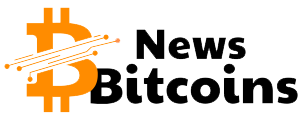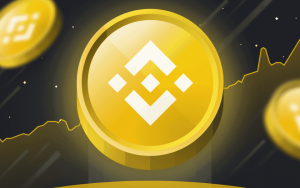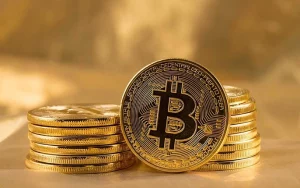What is Ethereum and how does it work? Ethereum (ETH) is a digital currency project built on Blockchain technology that is capable of executing smart contracts. So what is Ethereum technology, let’s find out in the article below. If Bitcoin is considered cryptocurrency 1.0 and is only used as currency, Ethereum is considered cryptocurrency 2.0 when applying smart contracts to solve many problems of the crypto market. Users can create Ethereum accounts from anywhere, anytime, and explore countless applications or build their own applications. The core innovation is that they can do all of this without having to rely on a central authority that can change the rules or prohibit connections.
What is Ethereum (ETH)?
Ethereum is an open-source, distributed computing platform based on blockchain technology that is capable of executing smart contracts – that is, the terms written in the contract will be executed automatically when the previous conditions are satisfied, without anyone being able to intervene. Ethereum is a Layer 1 Blockchain project that allows many programmers to build decentralized applications (DApps) and decentralized autonomous organizations (DAOs).

In there:
- Decentralized applications (DApps) are independently deployed software, not located on a single server but stored in a distributed manner on a decentralized repository and can be written in any language.
- Decentralized Autonomous Organizations (DAOs) are organizations run by members based on a set of rules encoded in code. All members have voting rights to make important decisions of DAOs.
What is Ethereum coin?
Ethereum has its native cryptocurrency called ether (ETH). Ether is a cryptocurrency (digital currency) created in 2013 by Vitalik Buterin, often referred to as cryptocurrency 2.0. Ether is required to perform almost every operation on Ethereum, and when it is used to execute smart contracts on the network, it is often referred to as gas. The amount of gas required is determined by the type of transaction being performed and the number of Ethereum transactions being verified. The more complex the transaction, the higher the gas fee.

Ethereum uses accounts to store ether, similar to bank accounts. There are two types of accounts to know about:
- Externally Owned Account (EOA): A type of account that regular users use to hold and send ether.
- Contract Accounts: These separate accounts are accounts that contain smart contracts, which can be triggered by ether transactions from EOAs or other events.
What is ETH Wallet?
An Ethereum wallet is an application that allows users to manage their assets. Like a real-world wallet, an Ethereum wallet stores information that proves a user’s identity and manages their assets. Through the wallet, users can log in to the application, read their balance, send transactions, and verify their identity.
How does ETH work?
The founders of Ethereum were pioneers who saw the full potential of blockchain technology beyond simply enabling secure virtual payments. Since Ethereum’s launch, ether has risen to become the second-largest cryptocurrency by market value.
Smart contract
Smart contracts are the most prominent feature of Ethereum. This technology allows users to digitize the conditions that govern the relationship and interactions between parties to a transaction. For example, person A decides to borrow 1,000 tether (USDT) from person B only if B deposits $2,000 worth of ether as collateral. By using a smart contract, A can independently determine the conditions that validate this agreement, instead of trusting a middleman. If executed correctly, the smart contract will automatically release 1,000 USDT to B after he deposits and locks $2,000 as collateral. Additionally, when A repays the loan, the smart contract will release the collateral and send the loan back to B. Therefore, smart contracts provide a trustless system between two parties, in which A or B do not need to worry about counterparty risk. It also eliminates the need for a middleman. Here, A and B also do not need to pay any additional fees for intermediary services or escrow before they can make a peer-to-peer (P2P) transaction. This innovation has opened up more blockchain use cases, leading to the explosion of decentralized applications.

Blockchain
Ethereum is similar to Bitcoin in that it relies on blockchain to store and secure transactions. Blockchain is a chronologically ordered series of blocks that contain data of confirmed transactions. Think of it as a ledger where all activities performed on the network or platform are recorded. This ledger is publicly available, making its contents easily traceable by network participants and even outsiders. Additionally, copies of this ledger are distributed across a global network of computers called nodes. These nodes perform various tasks on the network, including verification, recording transaction data, and smart contracts. This architecture allows participants to own a copy of the blockchain and collectively verify the validity of the content added. Some of the benefits of this include:
- No single point of failure
- Data is completely transparent, trustworthy and immutable
- Anti-censorship
However, where Ethereum differs from Bitcoin is that nodes not only have to verify and record transaction data, but also have to keep track of the state of the network.
Decentralized Applications (DApps) on Ethereum
Ethereum has ushered in a new era by allowing developers to build decentralized applications (DApps) on its platform. These applications can be used in a variety of fields, from finance, education to gaming and more.

Decentralized Finance (DeFi) Applications
One of the most prominent application areas on Ethereum is decentralized finance (DeFi). DeFi is a system of financial services built on blockchain technology, providing users with tools to manage personal finances, lend, borrow, and trade cryptocurrencies without the need for traditional financial intermediaries such as banks.
Some examples of DeFi applications on Ethereum include:
- Borrowing/Lending platforms: Aave, Compound, Maker
- Decentralized Exchanges (DEXes): Uniswap, Sushiswap, Curve Finance
- Derivatives trading: Synthetix
- Yield farming và liquidity mining
These applications allow users to engage in financial activities such as lending, borrowing, and trading cryptocurrencies without the need for traditional intermediaries. Instead, they use smart contracts to automate these processes.
Decentralized Education Applications
Ethereum is also being used in the education sector. Decentralized applications in education can help personalize learning experiences, manage certificates and degrees securely and transparently.
For example, an education DApp could store a user’s academic records on the blockchain, allowing them to easily share their information with employers or other educational institutions. This not only gives users control over their data, but also prevents fraud and forgery.
Decentralized gaming applications
Ethereum also offers many opportunities for game developers. Decentralized gaming applications (GameFi) on Ethereum allow players to truly own and control in-game assets. These assets can be virtual items such as weapons, equipment, or even in-game land.
Players can buy, sell, or trade these assets on decentralized exchanges. This creates an in-game economic ecosystem where players can earn real money from their gaming activities. Some examples of GameFi projects on Ethereum include Axie Infinity, CryptoKitties, The Sandbox.
Decentralized Autonomous Organizations (DAOs) on Ethereum
In addition to decentralized applications, Ethereum also enables the construction of decentralized autonomous organizations (DAOs). DAOs are organizations that are automatically run by a set of rules encoded on the blockchain, without the intervention of any individual or intermediary organization. This creates a new governance model, where decisions are made based on the consensus of the organization’s members.
What are DAOs?
DAOs, short for “Decentralized Autonomous Organizations”, are a unique concept in the blockchain space. The structure of a DAO is designed to function as an autonomous organization without the need for a central governing body. Instead, all decisions are made through voting by its members, often using voting tokens.
This not only brings transparency but also helps decentralize power within the organization. Each participant can hold the role of chairman or investor, depending on the number of tokens they own. In this way, DAOs promote fairness and openness in all decisions.

A typical example of a DAO is MakerDAO, where MKR token holders have limited control over the financial processes of the system. Thanks to this mechanism, people can build and develop common products together without having to rely on a single individual or organization to control them.
Benefits of DAOs
DAOs offer many benefits to organizations and communities. First, transparency is the biggest strength of this system. All transactions and decisions are recorded on the blockchain, making it easy for users to track and control the organization’s operations.
Second, DAOs are not bound by geography. Participants from anywhere in the world can join and contribute to the organization without ever meeting in person. This attracts diverse and innovative ideas from many different sources.
However, DAOs also face many challenges. One of the biggest is security. While blockchains are very secure, they are still vulnerable to hacker attacks, especially if smart contracts contain bugs. Furthermore, reaching consensus in a large group can be difficult, leading to delays in decision making.
DAOs in the future
Potentially, DAOs could become the foundation for future organizations. With the development of blockchain technology, many fields, from finance to art, have begun to adopt DAO models for community building and asset management.
We can see more and more social organizations and non-profits looking to adopt the DAOs model. This not only helps increase community participation but also creates a more transparent working environment where everyone has a voice.
However, the growth of DAOs will depend on improvements in blockchain technology as well as educating users about how they work. With an informed and engaged community, DAOs could become the future of organizations, creating sustainable value for society.
Conclude
Ethereum is more than just a cryptocurrency, it is the foundation for a revolution in the way we interact and build communities. From decentralized applications in finance, education to gaming, Ethereum has proven its power to create innovative and effective solutions.
Furthermore, the development of decentralized autonomous organizations (DAOs) opens up new avenues for governance models, promising a future where power and responsibility are distributed fairly and transparently. In this rapidly changing world, we need to embrace and learn about new technologies, especially in the blockchain field, so as not to miss out on the valuable opportunities they bring.






